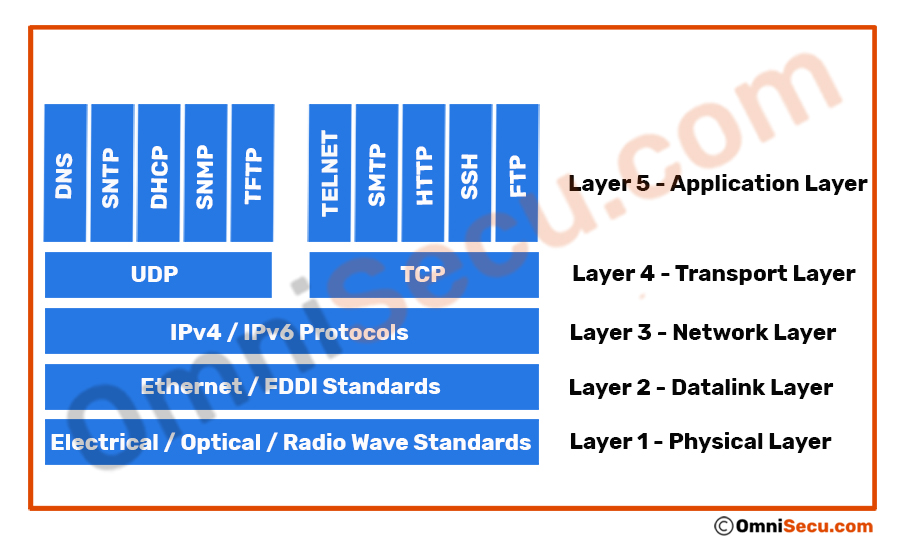Application Layer (Layer 5)
Application layer is the top-most layer of five layered TCP/IP network model. While the lower layers of TCP/IP protocol suite are primarily concerned with formatting, encapsulating and transmitting data across the network to the destination computer, top-most layer (Application layer) provides an interface between the network applications and other layers of TCP/IP protocol stack and ultimately the network.

The topmost layer, Application Layer of TCP/IP protocol suite is concerned mainly with human interaction and the implementation of software applications and related protocols. Application layer provides an interface with human (network application user) and the network. Thus, Application layer provides an interface between the network applications and other lower layers of TCP/IP protocol stack.

Eventhough it appears the data is flowing fluently from application to application from computer to computer for the end user, packing and repacking of data packets happen at different layers of TCP/IP protocol stack at different network devices.

Some protocols at Application Layer (Layer 5) use User Datagram Protocol (UDP) as the Transport Layer protocol and some other protocols at Application Layer (Layer 5) use Transmission Control Protocol (TCP) as the Transport Layer protocol. Please refer following image. Following image shows a small list of Application layer protocols which use TCP or UDP as Transport Layer protocol.

TCP/IP protocol suite is included with a large number of applications and application protocols. Using these applications and application protocols, data can be moved between hosts, and remote users can communicate with each other.
Following is a partial list of TCP/IP protocol suite application layer protocols. There are many other standard protocols, proprietary protocols, and applications working at Application layer.
- Hypertext Transfer Protocol (HTTP)
- Simple Mail Transfer Protocol (SMTP)
- Dynamic Host Configuration Protocol (DHCP)
- Domain Name System (DNS)
- Simple Network Management Protocol (SNMP)
- File Transfer Protocol (FTP)
- Trivial File Transfer Protocol (TFTP)
To get more wider view about different layers of TCP/IP protocol stack and how they operate together, please visit and learn below lessons in order.
- Five layered TCP/IP model
- How data is moved through different layers of TCP/IP model at sending and receiving computers
- Name of data packets at different layers of TCP/IP model
- TCP/IP Encapsulation and Decapsulation
- Application Layer (Layer 5)
- Transport Layer (Layer 4)
- Network Layer (Layer 3)
- Datalink Layer (Layer 2)
- Physical Layer (Layer 1)
You have learned what is TCP/IP Application Layer and what are the major protocols operating at Application Layer. Click "Next" to continue.